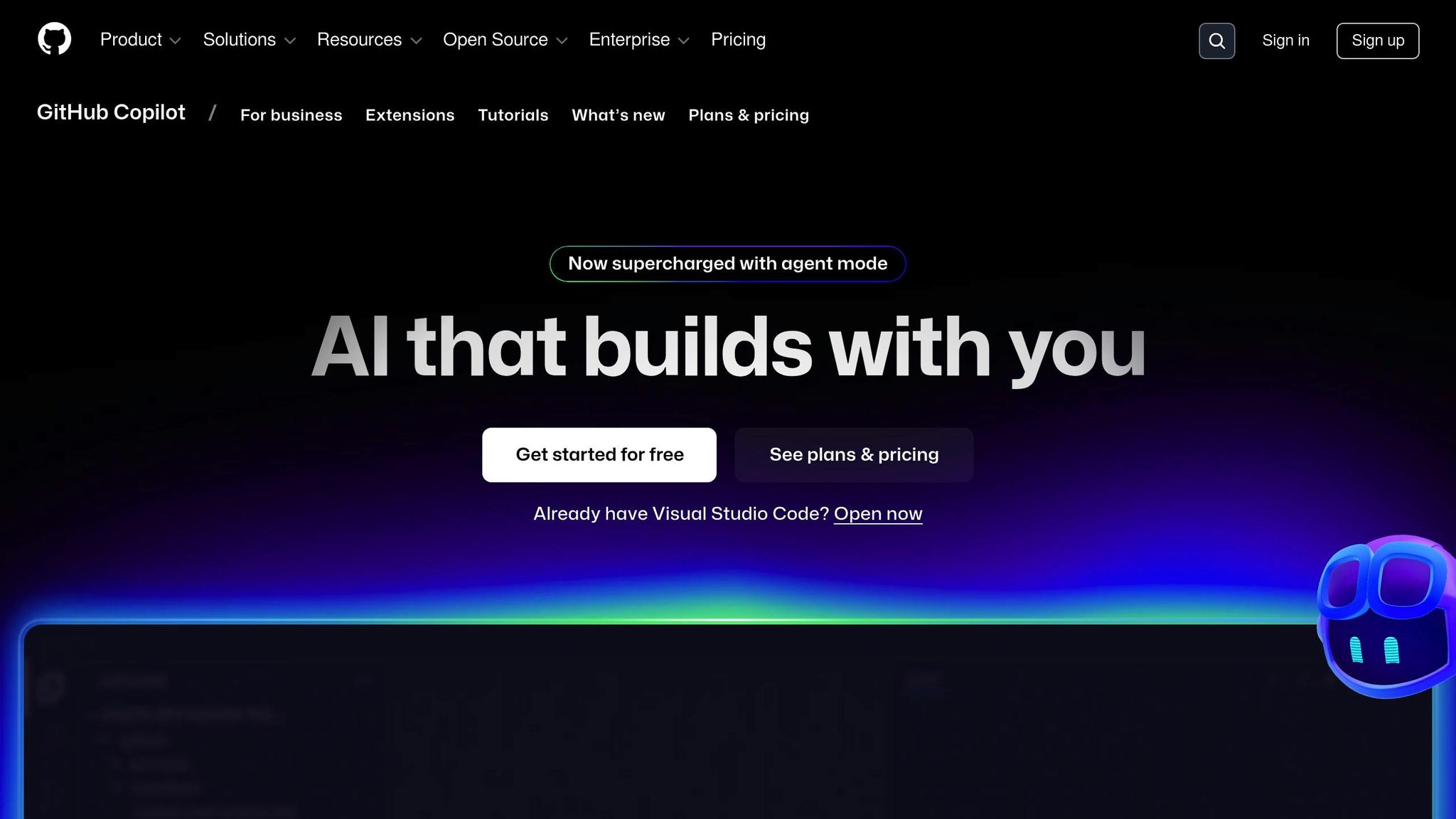API-First Design: Key Principles for Azure
Implementing API-first design on Azure can enhance collaboration, scalability, and compliance for UK SMBs while reducing costs and development time.

API-first design means planning and defining your APIs before writing any code. This approach ensures better scalability, integration, and security while saving time in the long run. For UK small and medium-sized businesses (SMBs), adopting API-first principles on Azure offers:
- Faster Development: Teams can work in parallel using clear API specifications.
- Cost Savings: Azure's pay-as-you-go tools (e.g., Azure Functions) reduce upfront costs.
- Compliance: Azure UK South ensures GDPR compliance and secure data residency.
- Scalability: Modular APIs adapt easily to business growth.
- Improved Collaboration: Clear documentation and reusable APIs enhance teamwork.
Azure tools like API Management, Logic Apps, and Key Vault simplify API-first implementation, helping SMBs build secure, compliant, and efficient systems. While initial planning takes effort, the benefits of faster launches, reduced costs, and better software quality make it worthwhile.
For UK SMBs, API-first design on Azure is a practical way to modernise systems while meeting regulatory needs.
Core Principles of API-First Design
Design APIs Before Implementation
The API-first approach flips the traditional development process on its head, treating APIs as independent products. The idea is simple but powerful: define detailed specifications and contracts before writing a single line of code. This method avoids the inconsistencies often seen in code-first approaches and ensures smooth integration with tools like Azure API Management, Logic Apps, and Azure Functions.
When you model an API upfront, you clarify its purpose and functionality right from the start, which improves communication across teams and ensures the API remains useful in the long run. And here’s an eye-opener: 75% of developers at API-first companies report being happier, launching products faster, eliminating security risks earlier, and producing better software overall. For SMBs in the UK, where competition is fierce, this kind of productivity boost can make all the difference.
Azure’s suite of tools supports this approach perfectly. Once the API contract is in place, teams can work on different components simultaneously, cutting down development time and boosting collaboration. This is a big deal when you consider that 51% of developers say over half of their organisation's development efforts revolve around APIs.
By planning carefully at the outset, you also lay the groundwork for clear documentation and consistent standards.
Clear Documentation and Stakeholder Alignment
Good API documentation isn’t just a technical manual - it’s a communication tool that connects technical teams with business stakeholders. For SMBs, where individuals often juggle multiple roles, having clear documentation early ensures everyone understands the API's purpose, capabilities, and limitations.
This early focus on documentation also saves time. Developers can reuse existing APIs instead of reinventing the wheel. Tools like Azure API Center make this even easier by offering a centralised inventory of APIs, so teams can quickly find and reuse what’s already available. And with the Visual Studio Code extension, developers can explore, test, and integrate APIs directly from their organisation's catalogue.
Effective documentation should include practical examples, clear descriptions of parameters, and expected response formats. It also plays a key role during stakeholder reviews, making sure business needs align with technical execution. Gathering feedback early and often can help avoid costly revisions later in the process.
Once documentation provides clarity, the next step is ensuring consistency through established standards.
Standards and Consistency
Following widely accepted standards, like RESTful APIs and OpenAPI specifications, ensures seamless integration with Azure services and third-party platforms. Consistency in API design makes solutions easier to scale, maintain, and predict over time.
Azure API Management simplifies this process by offering tools to create, publish, secure, and monitor APIs at scale. It also includes governance features that check for compliance with design standards across all APIs. This is especially useful for SMBs that may lack dedicated API governance teams.
From the start, it’s crucial to establish standard practices for data formats, naming conventions, error handling, and authentication. Azure’s support for OAuth 2.0 and Microsoft Entra ID provides robust authentication options that align with industry norms. Even small details, like clear and intuitive naming of API endpoints, can make a big difference for non-technical stakeholders.
Azure API Center takes consistency a step further with governance tools that let organisations customise API design rules to fit their specific needs. For example, a fintech startup used Azure API Management to enhance its app’s performance and security, cutting security incidents by 50%.
API design-first with Azure API Center and GitHub Copilot for Azure

Best Practices for API Design on Azure
Building on core API-first principles, the following practices offer actionable steps for designing and managing APIs effectively on Azure.
RESTful APIs and Resource-Oriented Design
Creating efficient APIs on Azure starts with a resource-oriented design. RESTful APIs focus on resources, which are identified by URIs, encouraging developers to think in terms of collections rather than specific actions. For example, use endpoints like /orders or /customers to represent collections, and /customers/123 for individual items. Stick to plural nouns for consistency and clarity.
Avoid the temptation to directly mirror your internal database structure. Instead, aim to model cohesive business entities that make sense to your clients. Azure supports standard HTTP protocols and widely-used data formats like JSON, allowing APIs to evolve independently of their clients. Furthermore, ensure your APIs are designed to support versioning and structured evolution for long-term usability.
Versioning and Clear Structure
Keeping your APIs backward-compatible while enabling them to evolve is essential. Azure API Management makes versioning straightforward, offering options such as versioning through URIs (e.g. /v1/customers, /v2/orders), query strings, headers, or media types.
Additionally, implement features like pagination and filtering (e.g. ?limit=50&offset=100, ?status=active) to optimise data retrieval and minimise payload sizes. For operations that take longer, return an HTTP 202 (Accepted) response and handle the task asynchronously using Azure Functions. Incorporating HATEOAS (Hypertext as the Engine of Application State) can further enhance usability by allowing clients to discover and navigate related resources seamlessly.
Using Azure Tools for API Management
Once your API structure is in place, Azure provides powerful tools to manage and secure your APIs. Azure API Management is trusted by thousands of organisations to manage millions of APIs. Its tiered pricing model caters to different needs, from the Developer tier for small-scale evaluations to the Standard and Premium tiers for enterprise-wide scalability.
Real-world examples highlight its effectiveness. BMW, for instance, uses Azure API Management to secure cloud systems and manage mobile app access. Similarly, Coles employs the service to safeguard online payments and counter fraudulent activities. Viju Chacko, Head of Digital Architecture at Air India, emphasised its value:
"Azure API Management is one of the services we rely on to expose our APIs and manage them in a very secure fashion with all the security layers mandated by our enterprise security team."
Azure API Management simplifies the process by centralising API governance. It ensures security, scalability, and performance while offering a customisable developer portal for seamless onboarding. Automated documentation and interactive testing further streamline integration, especially for small and medium-sized businesses.
For cost efficiency, the Azure Functions Consumption plan allows you to pay only for the resources you use. Additionally, Azure API Management policies enable advanced traffic control, built-in authentication, authorisation, rate limiting, and schema validation. Comprehensive logging and metrics provide valuable insights, helping you optimise your API performance.
For more tips on improving your Azure deployments - covering costs, architecture, security, and performance - check out Azure Optimization Tips, Costs & Best Practices.
Implementing API-First Design in Azure Environments
Bringing the concept of API-first design into practice on Azure requires a strategic approach. You’ll need to carefully select services, plan integrations thoughtfully, and ensure compliance with UK-specific regulations. Azure’s extensive range of tools simplifies this process for SMBs, provided you understand how to align these services with your goals. From choosing the right tools to ensuring seamless integration and regulatory adherence, each step plays a role in building a robust API-first framework.
Selecting Azure Services for API Deployment
At the heart of most API-first strategies lies Azure API Management, which processes over 2 trillion requests monthly across Azure Integration Services. For SMBs, its flexible pricing tiers allow for gradual scaling as your needs grow.
Azure API Management includes a gateway, management plane, and developer portal. Together, these components handle routing, configuration, and API discovery, removing the need to develop such features from scratch.
For security, combine Microsoft Entra ID with Azure Key Vault for authentication and secure key storage. Use Azure Monitor to track performance and usage patterns, giving you insights into how your APIs are being used and where improvements might be needed.
To automate workflows and integrate services, Azure Logic Apps is an excellent choice. Its visual designer makes it accessible to team members without advanced coding skills while still offering the power needed for more complex integrations.
Integrating APIs with Existing Applications
Start by cataloguing your existing systems to identify current APIs and any gaps in integration. This step helps you prioritise development and avoid duplicating efforts.
Clearly defining your business domains is critical. Avoid tying APIs directly to internal databases, as this can lead to tight coupling and reduce flexibility. Instead, design APIs that remain independent of your database structure.
For decoupled, event-driven communication, use Azure Service Bus and Event Grid. These tools support modern messaging patterns while maintaining the loose coupling that is essential in an API-first approach.
When building modular, reusable components, consider Azure Container Apps, Azure Kubernetes Service, or Azure Functions. Azure Functions, in particular, offers a pay-as-you-go model, making it a cost-effective option for SMBs with fluctuating workloads.
Don’t overlook the importance of training. Ensure your engineering, DevOps, and product management teams are well-versed in API-first principles. This knowledge helps avoid common pitfalls and ensures consistent application across your projects. Once integrations are in place, the focus shifts to meeting compliance and data residency requirements.
Addressing Compliance and Data Residency
After establishing well-integrated APIs, it’s crucial to meet UK-specific compliance standards, such as GDPR, especially if you process data for EU residents. Data residency - where your organisation’s data is stored - becomes a key consideration under these regulations.
Microsoft supports these needs through contractual commitments and technical capabilities. They guarantee that your data won’t be used without your agreement and provide options to store data in specific regions to comply with geographic regulations. Most Azure services allow you to choose where customer data is stored and processed.
For UK businesses, this means you can store data within the UK or EU regions to meet local requirements. While Microsoft may copy data between regions within the same geography for redundancy, access by personnel outside the region is restricted without proper authorisation.
From day one, apply strong encryption and security measures. Azure offers tools to protect data both in transit and at rest, ensuring your information stays secure. Using platforms like Data Security Posture Management can also enhance visibility into user activity and potential risks, helping you maintain compliance.
The key is selecting the right services and data locations that align with your business needs while adhering to regulatory requirements. Azure’s range of tools and options for Microsoft commercial cloud services allows you to build a secure, scalable API-first environment that meets compliance standards. By maintaining modular integrations and clear API contracts, you create a strong foundation for growth and security.
For more guidance on optimising Azure deployments, including cost-saving tips and performance strategies tailored for SMBs, visit Azure Optimization Tips, Costs & Best Practices.
Advantages and Challenges of API-First Design for UK SMBs
API-first design on Azure presents both opportunities and hurdles for UK small and medium-sized businesses (SMBs). Carefully weighing these trade-offs is essential to align with your business objectives. Below is a comparison and practical advice to illustrate how these factors play out in real-world scenarios.
Pros and Cons Comparison Table
| Advantages | Challenges |
|---|---|
| Faster Development Cycles: Teams can work on different components simultaneously thanks to parallel workstreams. | Initial Planning Overhead: Requires significant upfront effort for design and documentation before coding starts. |
| Enhanced Scalability: Modular, decoupled systems adapt more easily to changing business requirements. | Learning Curve: Teams need to learn API-first principles and Azure-specific tools. |
| Cost Efficiency: Azure’s pay-as-you-go pricing eliminates the need for large upfront investments. | Complexity Management: With nearly 100 Azure services available, teams can feel overwhelmed without proper guidance. |
| Better Team Collaboration: Standardised APIs improve coordination across front-end, back-end, and external developers. | Documentation Burden: APIs require constant updates to maintain clear and accurate documentation. |
| Future-Proofing: Decoupled services make it easier to integrate with new technologies and third-party tools. | Security Considerations: API endpoints increase potential attack surfaces, demanding strong security measures. |
| GDPR Compliance: Azure’s UK data residency options help meet regulatory requirements. | Governance Overhead: Establishing and enforcing API standards across teams requires ongoing effort. |
Addressing Common Challenges
To successfully implement an API-first strategy, UK SMBs need to tackle these challenges head-on. Limited resources and technical complexity are common pain points, but practical solutions can ease the journey.
Managing Costs and Budgets is one of the top priorities. While cloud computing introduces immediate expenses, careful planning can avoid unnecessary costs. Build a solid Azure foundation with essential features like logging, monitoring, alerting, and security right from the start. This proactive approach reduces the risk of expensive rework later. For example, using "contemporary lift and shift" strategies - focusing on automation and optimising virtual machines - can help minimise waste.
"Cost is also a big factor, because whatever you do, cloud computing will incur cost straight away. Wastage should be avoided at all cost (pun intended). This ties back into your strong Azure foundation and your foundational principles."
Bridging Skills Gaps is another critical step. API development can be resource-intensive, so investing in targeted training is essential. Partnering with experienced Azure consultants during the initial phases can also provide valuable guidance and accelerate adoption.
Simplifying Technical Complexity is achievable with proper planning and automation. Start by outlining high-level tasks and leverage Infrastructure as Code tools like Azure Resource Manager templates or Terraform. These tools help automate deployments and ensure consistency.
"Automation is key; things will fail in the cloud, and only automation enables you to respond to changes in a timely fashion."
Streamlining Documentation and Governance can be made easier with tools like Azure’s developer portal. Establishing a company-wide API style guide ensures consistency across teams .
Strengthening Security and Compliance is non-negotiable. Implement strong security measures from day one to protect sensitive data. Use security checklists and consider hiring external vendors for periodic penetration testing. Additionally, Azure’s UK data residency options can help meet GDPR requirements.
Ultimately, API-first development encourages a culture of reuse, where developers can build new features and applications more efficiently by leveraging existing APIs. While the upfront investment in planning and training may feel substantial, businesses that adopt API-first approaches often report faster product launches, improved software quality, and happier development teams.
For more tips on managing Azure costs while implementing API-first strategies, including specific optimisation techniques for SMBs, visit Azure Optimization Tips, Costs & Best Practices.
Conclusion
API-first design is reshaping how UK SMBs approach technology, offering a clear path to staying competitive in an ever-changing market. By focusing on API development before implementation, businesses gain the adaptability and scalability needed to meet shifting demands head-on.
According to a 2025 Forrester study, organisations using Azure API Management achieved a 315% ROI over three years. This was attributed to quicker time-to-market, reduced legacy system costs, and enhanced developer productivity. These figures underline the tangible financial and operational gains of adopting an API-first strategy.
For UK SMBs, the advantages are especially notable. API-first design enables swift responses to market changes, allowing businesses to launch new products and services faster. By embracing an API-led architecture, companies can overcome traditional constraints, exposing valuable data and services to unlock new revenue opportunities.
This approach also fosters innovation and agility, ensuring businesses are better equipped for future challenges. By encouraging communication through general APIs rather than device-specific ones, it lays the groundwork for long-term growth and technological advancement.
To maximise these benefits, UK SMBs should adhere to best practices like using standards such as REST, implementing robust security measures (e.g., SSL/TLS, rate limiting), and providing clear, publicly accessible API documentation. Consistent API specifications and careful version management are also essential to ensure seamless operations and avoid disruptions.
Azure’s robust suite of services offers a solid foundation for API-first implementation. With UK data residency options that align with GDPR requirements, Azure provides SMBs with a platform that supports digital transformation while addressing compliance needs. For UK businesses navigating data protection regulations, this is a crucial advantage.
By leveraging these technical strengths, businesses can achieve lasting value. As highlighted earlier, clear standards and effective API management are key to sustaining growth. Embracing API-first principles not only ensures good design practices but also makes it easier to extract long-term value from digital assets.
For tailored advice on optimising your Azure setup while keeping costs in check, visit Azure Optimization Tips, Costs & Best Practices to access expert insights designed specifically for SMBs scaling on Microsoft Azure.
FAQs
How does an API-first approach enhance team collaboration in Azure projects?
An API-first approach enhances teamwork on Azure projects by making sure APIs are defined and agreed upon right from the start. This clarity allows backend, frontend, and QA teams to work simultaneously, cutting down on delays and avoiding miscommunication.
When APIs are well-documented and consistent, it becomes much easier for different teams to align their work, leading to seamless integration and improved efficiency. This method also supports growth and dependability, enabling small and medium-sized businesses to fine-tune their Azure solutions for sustained success.
How can I ensure GDPR compliance when using API-first design on Azure?
To align your API-first approach on Azure with GDPR requirements, prioritise data privacy and security by utilising Azure's built-in compliance tools. These features help you address key GDPR principles, such as data residency and cross-border data transfers, ensuring your practices meet regulatory standards. Establish strong data handling policies and implement clear consent mechanisms for collecting and processing personal data.
Azure also offers a range of tools to simplify GDPR-related responsibilities. For example, it can assist with managing data subject access requests and maintaining consent frameworks. By incorporating these tools into your API-first strategy, you can create a secure, GDPR-compliant environment on Azure.
How can small and medium-sized businesses (SMBs) in the UK simplify the planning process for adopting API-first design on Azure?
UK small and medium-sized businesses (SMBs) can make the shift to API-first design much more manageable by starting with a clearly defined and well-documented API strategy. This means outlining the purpose of each API, detailing its functionality, and understanding how it will integrate with existing systems. Investing time in thorough planning upfront can help prevent unnecessary complexity and costly revisions down the line.
Adopting standardised design practices and utilising the right tools can also simplify the process. By sticking to consistent API guidelines and using automation tools for testing and documentation, businesses can speed up deployment and make ongoing maintenance more straightforward. Encouraging collaboration between teams during this planning stage can further ease the transition to an API-first approach.
By focusing on these foundational steps, SMBs can not only streamline the adoption process but also enhance their Azure environment, boost scalability, and cut costs over time.




